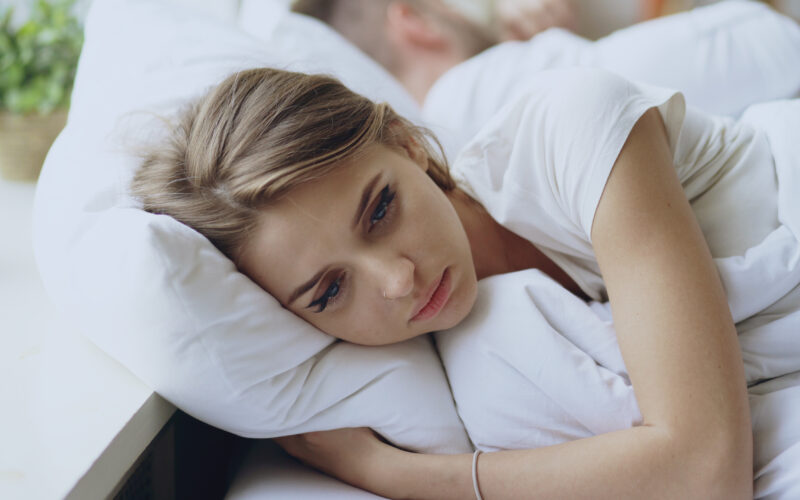A few years ago, when I worked for the Center for Drug Evaluation and Research at the FDA, we hosted a Patient Focused Drug Development meeting on female sexual dysfunction (FSD). During the meeting, FDA staff listened to the stories of women who dealt with all manner of sexual dysfunctions, many of which involved low libido.
FSD is a term that is now used to describe the following:
a heterogeneous collection of conditions that have previously been classified into four different disorders: hypoactive sexual desire disorder (HSDD) characterized by a reduced or absent interest in sexual activity, female sexual arousal disorder (FSAD) characterized by an inability to attain or maintain sexual excitement, female orgasmic disorder characterized by the difficulty to attain orgasm despite sufficient arousal, and sexual pain disorder characterized by pain during sexual intercourse.
The Patient Focused Drug Development meeting on FSD was somewhat controversial, as it featured a heavy presence from Sprout Pharmaceuticals, creators of the so-called “female Viagra” (flibanserin), meant to remedy low sexual desire in pre-menopausal women. The meeting was called in large part because while one recent survey found “that 12% of women reported experiencing personally distressing sexual problems,” very few pharmaceutical options are available for women who experience these issues. The lack of treatment options is due in large part to the difficulty of measuring sexual desire objectively; desire is inherently subjective, and baseline libido can vary so significantly from woman to woman. Nevertheless, after listening to the stories of the brave women who spoke at the meeting, it became clear that libido issues are a very real, very distressing issue that many women face. Further, the effects of libido issues are not limited to the bedroom and can cause significant damage and distress in other areas of women’s lives and relationships.
If you are experiencing lowered libido, and especially if it is causing you distress, it might be time to talk to your doctor about it. There are a variety of factors that can contribute to lowered libido, and a good physician will take into account all of them. And if you are already tracking your cycle through a Fertility-Awareness Based Method, you may be ahead of the game in getting to the bottom of your libido issues, especially if you are able to discuss this information with a FABM-informed physician.
For this article, I spoke with Dr. Brian Burke, a primary care physician who is trained in the Sympto-Thermal Method of Natural Family Planning. Dr. Burke often uses Natural Procreative Technology (Napro) techniques in his medical practice, which helps him pinpoint what factors most affect libido and how FABM/NFP can help.
Age and Reproductive Health Dysfunctions
Age is definitely one of the major factors playing into a woman’s libido. “Low libido can have several different causes, particularly depending on different stages in a woman’s life,” Dr. Burke told me. “For instance, low libido is common during the perimenopausal/menopausal stage in a women’s life, resulting from fluctuating hormones that not only drive libido, but also can result in low estrogen symptoms of vaginal dryness and atrophy. This can result in pain and discomfort with intercourse, which in turn will inhibit a women’s sexual desire.” At other times of life, Dr. Burke says, pain during sex can be a result of endometriosis, ovarian cysts, or fluctuating or abnormal hormones in syndromes such as Polycystic Ovarian Syndrome (PCOS).
No matter your age, Dr. Burke says that there are benefits to charting your cycle that can help you and your doctor get to the bottom of libido issues. According to Dr. Burke, “women who are charting—both those younger with abnormal bleeding or irregular cycles, and older women entering the perimenopausal stage—can use FABMs to more quickly and decisively determine when hormonal irregularities are contributing to their symptoms.” In turn, charting can help women and their doctors “to be more aware of the impact of the physiological causes that contribute to the psychological causes, and vice versa.” With the information gleaned from charting, Dr. Burke says, “women can then work with physicians to do more targeted evaluations and treatments to better address the underlying causes.”
Desire for Sex, and Physical Response to Sex
Some women experience an unexplained decrease in their desire for sex. For others, painful sex or a lack of sexual response can be the culprit in a decreased desire for sex.
For those women for whom sex is painful, naturally, the result is often less desire for sex. There are a variety of factors that can contribute to painful sex (not all of them physical), and any woman experiencing painful sex should be able to freely discuss the issue with her doctor without fear of judgment or fear of not being taken seriously. Some pharmaceutical therapies are available for women who may experience painful sex related to menopause.
For some women, sex can be painful, and naturally, painful sex can lead to less desire for sex. There are a variety of factors that can contribute to painful sex (not all of them physical), and any woman experiencing painful sex should be able to freely discuss the issue with her doctor without fear of judgment or fear of not being taken seriously. If sex is painful for you, or if you have difficulty achieving orgasm, it only makes sense that sex may be less desirable. Both of these are issues that you should be able to discuss with your doctor.
Some women may still desire sex, and experience difficulty with achieving arousal or orgasm, which in turn makes sex less desirable. For participants at the FDA’s PFDD meeting on FSD, their inability to become aroused—even with foreplay—caused significant distress to themselves and their partners, and often caused one or both partners to avoid sex altogether for fear of “shooting down” their partner’s advances, or “being shot down” by their partner. Both a lack of physical response to sex and painful physical response to sex are both issues that you should be able to discuss with your doctor without embarrassment or fear of being brushed off as silly or insignificant.
Psychological and Relational Factors
Unfortunately, concerns about libido are often brushed aside by individuals and healthcare providers alike. Women who approach their doctors with complaints of low libido might be given simplistic advice to “have a date night.” And while it’s true that for women especially, emotional connection is a significant prelude to sexual intimacy (think of the old adage “Women need to feel connected to have sex, but men need to have sex to feel connected”), persistent issues with low libido can be a sign of a larger issue in one’s health, lifestyle, relationships, or some combination of these issues.
If you are experiencing issues in your relationship, whether they stem from personal insecurities, issues with trust, unresolved arguments, or other relational constraints, they can absolutely have an impact on your libido. Even if this is the case, sometimes it is more than a single date night can solve.
According to Dr. Burke, addressing acute issues with libido means that doctors must consider the psychological and relational factors that might be at play in contributing to lowered libido in their patients. “Longitudinal studies have shown that relationship factors were more impactful on overall sexual function than hormonal determinants in sexual function,” says Dr. Burke. But, he cautions,“this does not mean that the medical and physiological aspects should be excluded or ignored.”
Dr. Burke recommends that primary care physicians have conversations with their patients during “well woman” visits about their sexual concerns. This conversation can help women to “open up other health concerns, both physical or mental, as well as relational concerns that a woman may not otherwise share.” For Dr. Burke, these conversations are an important way of treating female patients as whole people, and addressing both their physical and psychological needs. Dr. Burke also points out that research indicates that couples who use FABM tend to have healthier, more satisfying interpersonal and sexual relationships, both of which contribute to a healthy libido.
Hormones and Medications
For many women, hormonal birth control might be the main culprit in their lowered sex drive. Depression and anxiety—a veritable epidemic in modern society—as well as the antidepressant medications often used to treat these issues, are also known for their libido-lowering effects.
For those on birth control experiencing distress over lowered libido, it might be time to consider charting their cycles through Fertility Awareness-Based Methods instead. Hormonal imbalances that are often covered up (and not treated) by birth control may come to light while discontinuing birth control and beginning to chart your cycle, which might reveal yet another source of lowered libido. For those experiencing lowered libido with antidepressant medication, it might be beneficial to explore other treatment or dosage options with your doctor.
Most often, issues with lowered libido are a combination of the issues discussed above, and there is no one-size-fits-all-approach to getting to the bottom of the problem. Low libido is a real health concern and not something you or your doctor should brush off. A good doctor will treat the whole patient, and take into account all of the multi-faceted aspects of libido, and treat the issue of low libido with the nuance it deserves.
Grace Emily Stark received her M.A. in Bioethics & Health Policy from Loyola University Chicago.







